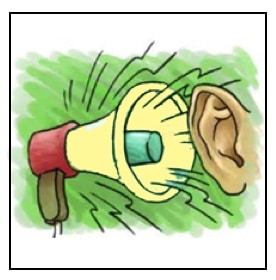I don’t need to tell you that Google is the most popular search engine in the world. It receives 3.5 billion search queries per day. Google is a tool that people worldwide use to pose questions that are answered with a combination of paid advertisements and organic ads.
Many small businesses score quality leads using Google Ads, and your hearing practice could too!
There are many ways to advertise using Google Ads, but you will select from one of three campaign types: search, display, or video. And there are two types of search ads: regular search and responsive search.
Today, we’ll be focusing on the power of the responsive search ad.
What are responsive search ads (RSAs)?
Responsive search ads allow you to enter different versions of headlines and ad copy (15 and 4 variations) for Google to pick the best matches for users to see on their search results.
A regular search ad only creates one static version of your ad for every customer and locale, using the same title and summary. However, RSAs autotest each combination until you hit the text that is better suited to your target market. For Google, that means the combination which gets you the most clicks.
Advantages of Responsive Search Ads
Having the ability to use multiple headlines and descriptions improves your advertising, particularly in a competitive market, exponentially. Here are a few of the critical benefits of responsive search ads.
- Always improving: RSAs allow you to test headlines and descriptions for your ads quicker and more effectively than a human could. If you find winning headlines and descriptions, you could extend and further optimize for even better performance.
- Improved performance: According to Google, RSAs give a 5-15 percent higher click-through rates (CTR) and conversions (leads) compared to regular search ads.
- More avenues to test: You can build up to 15 headlines and four descriptions, which means you have plenty of flexibility to test various ideas.
- Save time: You can try out lots of combinations in a short space of time. Then Google Ads will use machine learning to help you find the best-performing ads.
How can I improve my Responsive Google Ads?
Although responsive search ads ensure Google chooses your absolute best ad to show to potential patients, if all of your ads aren’t up to scratch in the first place, your overall CTR is still likely to be reduced. Here are a few tips to improve your Google Search Ads.
#1: Improve your ‘Quality Score’
The Quality Score is a metric used in Google Ads. It provides a score from 0 to 10 for every keyword in your account. It is a test of your ad’s likelihood to be clicked. Do everything you can to improve this score!
#2: Write better ad copy
You should write a persuasive ad copy that stands out from the ads made by your local competitors. When your ad copy is identical to the other hearing practices in your area, then your CTR will possibly suffer. Show your specific selling points. Why should people choose you over others? What are you offering other people that are different?
#3: Learn more about your audience
You want to increase the amount of traffic that you are producing, but at the same time, you want to make sure the traffic you are receiving is directed at the right people. To do so, try to answer these questions:
- Who are your potential customers?
- What typical hearing issues are they encountering?
- How could you solve these?
 Nick Fitzgerald is the President and Owner of AuDSEO. He also serves as the Chief Marketing Officer at Hearing Health & Technology Matters. With 13 years of digital marketing experience, Nick is a highly data-driven marketer, with expertise in search engine optimization, digital analytics and forensics, social media, digital advertising, and web development. He has been involved in the construction and optimization of nearly 1,000 web presences, including some of the largest Fortune 500 companies.
Nick Fitzgerald is the President and Owner of AuDSEO. He also serves as the Chief Marketing Officer at Hearing Health & Technology Matters. With 13 years of digital marketing experience, Nick is a highly data-driven marketer, with expertise in search engine optimization, digital analytics and forensics, social media, digital advertising, and web development. He has been involved in the construction and optimization of nearly 1,000 web presences, including some of the largest Fortune 500 companies.






